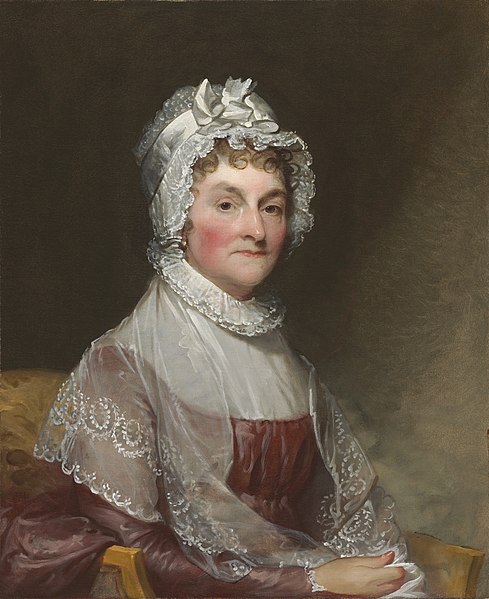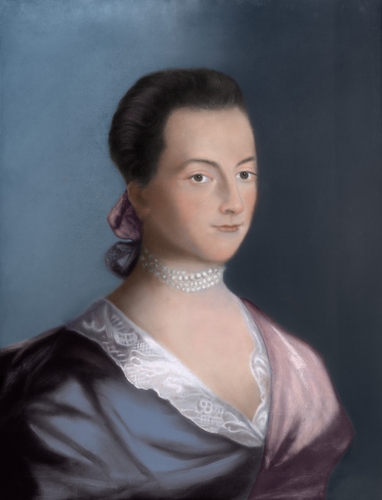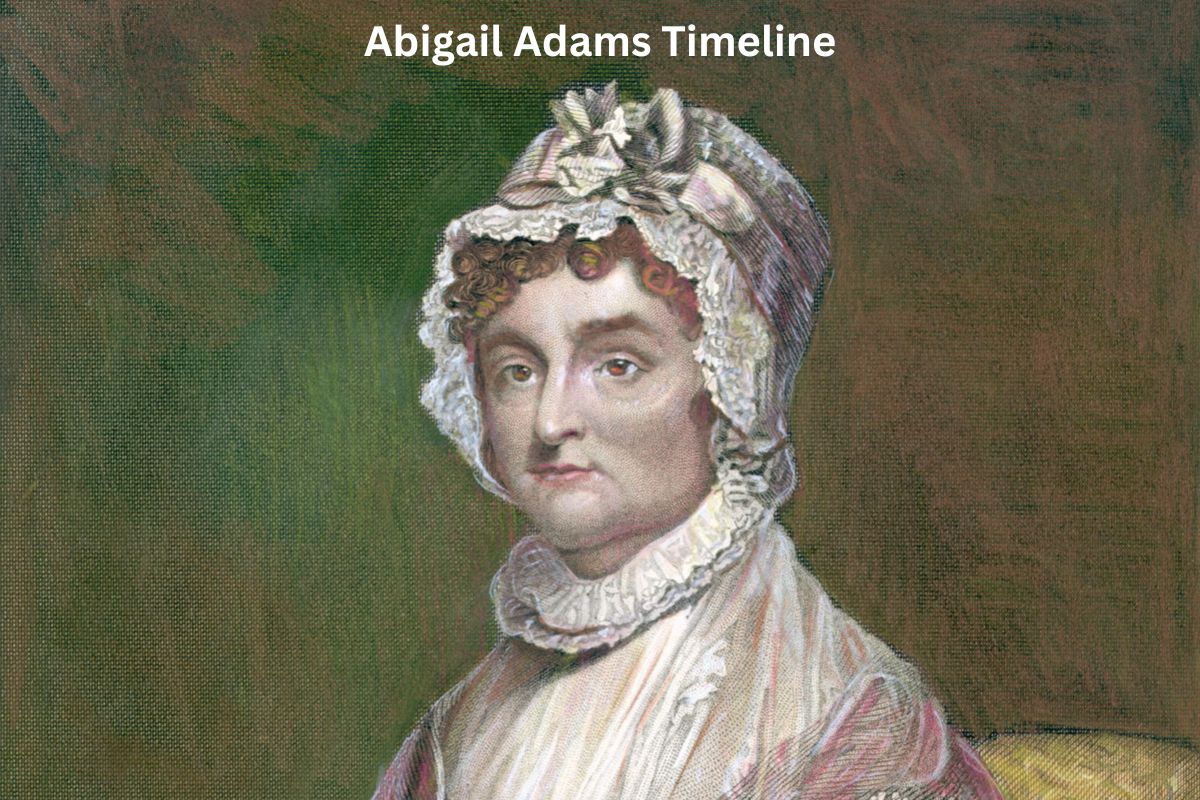Abigail Adams, born Abigail Smith in 1744, was a prominent figure in early American history. She is best known as the wife of John Adams, the second President of the United States, and the mother of John Quincy Adams, the sixth President.
Renowned for her intelligence and political insight, Abigail played a significant role in the American Revolution and the early years of the United States through her extensive correspondence and influence.
Her letters, especially to her husband, are treasured historical documents that provide valuable insights into the political and social landscape of her era.
Abigail Adams was a forward-thinking woman, advocating for women’s rights and education, making her an early advocate for women’s equality. She passed away in 1818, leaving behind a legacy as a key figure in American history.
| Year | Event |
|---|---|
| 1744 | Abigail Smith (later Adams) was born on November 22, in Weymouth, Massachusetts. |
| 1764 | Marriage to John Adams on October 25. |
| 1765-1772 | Birth of six children, including John Quincy Adams (born in 1767). |
| 1774-1783 | Managed family farm and business during the American Revolution. |
| 1784-1789 | Lived in Europe with John Adams, who served as a diplomat. |
| 1797-1801 | Served as the First Lady of the United States. |
| 1801-1818 | Retirement in Quincy, Massachusetts, with ongoing political involvement. |
| 1818 | Passing of Abigail Adams on October 28. |
Timeline of Abigail Adams
1744 – Born in Weymouth, Massachusetts
Abigail Adams, originally named Abigail Smith, was born on November 22, 1744, in Weymouth, Massachusetts. She was born into a well-educated and politically active family.
Her father, William Smith, was a minister of the First Congregational Church in Weymouth, and her mother, Elizabeth Quincy Smith, came from a prominent Massachusetts family.

1764 – Married John Adams
On October 25, 1764, Abigail married John Adams, a young lawyer at the time. Their marriage was based on mutual respect and affection, and they became intellectual partners throughout their life together.
Also Read: Abigail Adams Accomplishments
John Adams later played crucial roles in American politics, including serving as the second President of the United States.
1765-1772 – Birth of six children, including John Quincy Adams
Between 1765 and 1772, Abigail and John Adams had six children. Their first child, Abigail (“Nabby”), was born in 1765, followed by John Quincy Adams in 1767, who later became the sixth President of the United States.
Their other children were Susanna (born in 1768 but died in infancy), Charles (born in 1770), Thomas Boylston (born in 1772), and Elizabeth (born and died in 1777). Abigail’s role as a mother was central to her life, and she maintained a close relationship with her children, especially John Quincy Adams.
1774-1783 – Managed family affairs during the American Revolution
During the American Revolution, John Adams was frequently away from home, serving in the Continental Congress and later in diplomatic roles in Europe. During these absences, Abigail Adams managed the family farm and took care of their children.
Also Read: John Quincy Adams Facts
She displayed remarkable resilience and resourcefulness, dealing with wartime shortages and managing the family’s financial affairs.
Her letters to John during this period are filled with political insights and observations about the Revolution, showcasing her intellect and engagement with the political issues of the time.
1784-1789 – Lived in Europe with John Adams
Abigail joined John Adams in Europe in 1784, where he was serving as a diplomat. They lived in France and then in London after John was appointed the first American Minister to the Court of St. James’s (the United Kingdom).
These years in Europe exposed Abigail to different cultures and political systems, further broadening her understanding of the world.
She often commented on the social and political landscapes of the countries they lived in, and her correspondence from this period provides valuable insights into the life and thoughts of an American woman abroad during the 18th century.

1797-1801 – First Lady of the United States
When John Adams became President in 1797, Abigail Adams became the First Lady of the United States. She was one of the most active First Ladies of her time, known for her strong opinions and active role in political discussions.
Abigail often advised her husband on political matters and was his closest confidante and advisor. She was sometimes called “Mrs. President,” reflecting her influence in political affairs.
Her time as First Lady was marked by her continued correspondence and engagement with important political figures of the era, providing critical support to her husband during his presidency.
1801-1818 – Retirement years in Quincy, Massachusetts
After John Adams’s presidency, the couple retired to their farm in Quincy, Massachusetts. During these years, Abigail remained an active correspondent, continuing to exchange letters with friends, family, and political figures.
Her letters from this period reflect her keen observations on the early years of the United States, as well as her thoughts on personal and family matters. This time was also marked by the rise of her son, John Quincy Adams, in American politics.
Abigail played a significant role in advising and supporting her son’s career, showcasing her enduring influence in political matters even in retirement. Her role as a matriarch was central, and she was deeply involved in the lives of her children and grandchildren.
1818 – Passed away on October 28
Abigail Adams passed away on October 28, 1818, at the age of 73. She died of typhoid fever. Her death marked the end of an era, as she was one of the most influential women of the American Revolutionary period and early Republic.
Abigail’s legacy continues through her extensive correspondence, which provides an invaluable window into the political, social, and personal aspects of American life during her time. Her letters, especially those to her husband John Adams, are celebrated for their wit, insight, and depth of understanding of the political and social issues of her day.
Her contributions to American history are remembered and honored, and she remains a symbol of the vital role women played in the founding and shaping of the United States.
